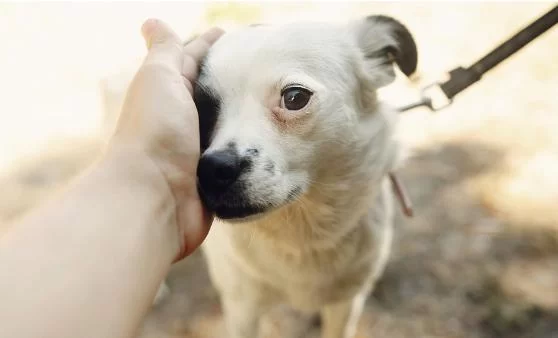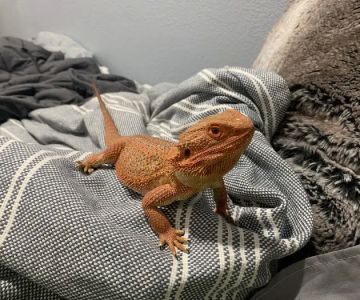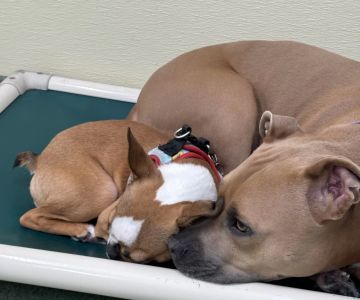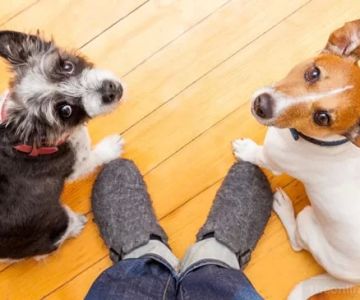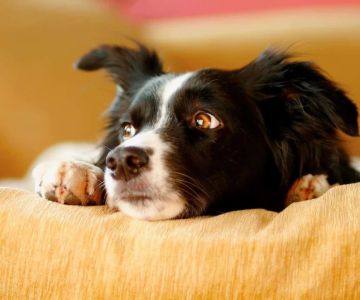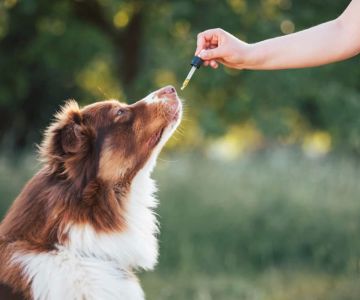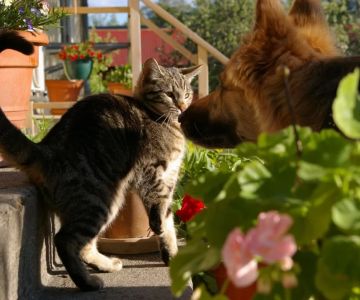Understanding Your Anxious Dog Around Other Animals
If you have an anxious dog, you know just how stressful it can be for both of you when they react negatively around other animals. When I first adopted my dog, Bella, she was a sweet and loving companion but had severe anxiety around other dogs. Every time we went to the park or encountered another dog on our walks, she would start barking uncontrollably, trying to pull away from the situation. It became apparent that her anxiety was a real challenge, and I wanted to do everything I could to help her feel more comfortable and confident.
After a lot of research and guidance from my vet, I learned that dog anxiety around other animals is quite common. Whether it's due to a lack of socialization as a puppy, a traumatic experience, or just an overall nervous temperament, many dogs experience anxiety in these situations. But there is hope! With the right techniques, you can help your dog overcome their fears and enjoy social interactions with other animals.
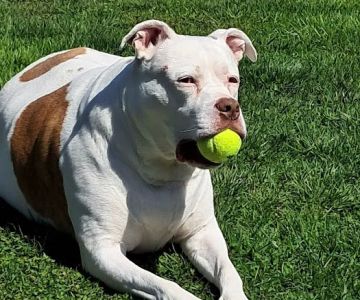
2230 Bristol Oxford Valley Rd, Levittown, PA 19057, USA
See DetailsCommon Causes of Anxiety Around Other Animals
Understanding the root causes of your dog’s anxiety is essential in finding the best way to address the issue. In Bella’s case, I learned that her anxiety stemmed from a lack of early socialization. She wasn’t exposed to a variety of animals when she was a puppy, so she wasn’t used to being around other dogs. However, other dogs may become anxious due to different triggers. Some common causes of anxiety around other animals include:
1. Lack of Early Socialization
Socialization during the critical developmental period (between 3 to 14 weeks old) is key to raising a well-adjusted dog. Dogs that weren’t exposed to other animals or a variety of environments during this time may become fearful or anxious in new situations. This was Bella’s case; she had spent her early days in a small shelter without much opportunity to interact with other dogs. As a result, she became nervous and reactive when meeting other animals.
2. Traumatic Experiences
For some dogs, anxiety around other animals stems from a past traumatic experience, such as being attacked or bullied by another dog. This trauma can leave lasting emotional scars, making them fearful of other animals. If your dog has had a negative encounter with another animal, it’s important to be patient and understanding as they work through their fear.
3. Inadequate or Improper Training
Sometimes, a dog may exhibit anxiety around other animals due to improper or insufficient training. If your dog has not learned how to properly behave around other animals, they may act out in fear or aggression. This could lead to a cycle of anxiety, where the dog is punished or scolded for behaviors that stem from fear, only exacerbating the problem.
Steps to Help Your Anxious Dog
Helping an anxious dog around other animals requires a mix of patience, training, and positive reinforcement. It’s important to take things slow and allow your dog to progress at their own pace. Here are some practical steps that helped Bella overcome her anxiety and can work for your dog as well:
1. Gradual Exposure and Desensitization
The most effective way to help an anxious dog is through gradual exposure to the situations that cause their anxiety. This method is called desensitization. Start by exposing your dog to other animals from a distance where they feel comfortable. For example, if your dog becomes anxious around other dogs at the park, try standing at the edge of the park where they can see the dogs but aren’t in close proximity. Over time, slowly decrease the distance between your dog and the other animals. Reward your dog with praise or treats for staying calm.
With Bella, I started by walking her near dogs at a distance where she didn’t react. We would reward her with treats every time she calmly observed other dogs. Over time, Bella became less reactive, and she was eventually able to walk past other dogs without barking or pulling. This gradual approach helped her build confidence and reduce her anxiety.
2. Positive Reinforcement
Positive reinforcement is crucial when helping an anxious dog. Whenever your dog behaves calmly around other animals, reward them with treats, praise, or even a favorite toy. This helps your dog associate positive experiences with being around other animals. I found that using high-value treats, like small pieces of chicken or cheese, worked best to keep Bella focused on the task at hand.
3. Teach Basic Commands for Focus
Teaching your dog basic commands like “sit,” “stay,” and “look” can help redirect their attention when they begin to feel anxious. These commands give your dog something to focus on other than the other animals, which can help them stay calm in potentially stressful situations. I made sure Bella knew “sit” and “stay” well before we began exposing her to other dogs. Whenever she started to feel anxious, I would ask her to “sit” and reward her for staying calm.
4. Use Calming Aids
Sometimes, calming aids can provide additional support for your anxious dog. Products like calming collars, pheromone diffusers, or natural supplements (such as valerian root or CBD oil) can help reduce anxiety. For Bella, I tried a calming collar that released pheromones that mimicked the soothing scent of a mother dog, which helped her feel more relaxed. These aids can be particularly useful when paired with behavioral training.
5. Consult a Professional Trainer or Behaviorist
If your dog’s anxiety is severe or doesn’t improve with basic training techniques, it may be time to seek professional help. A certified dog trainer or animal behaviorist can work with you and your dog to address the anxiety and provide tailored strategies for success. Bella’s anxiety around other dogs improved significantly after we consulted with a trainer who specialized in fear-based behavior. The trainer helped us create a specific plan for Bella’s needs and gave us valuable insights into how to manage her anxiety.
Creating a Safe and Calm Environment
In addition to training and exposure, creating a calm and safe environment for your dog at home is crucial. Dogs with anxiety often feel stressed by unpredictable or chaotic environments. Make sure your dog has a quiet, comfortable space where they can retreat when they feel overwhelmed. I created a cozy bed for Bella in a quiet corner of the house where she could relax away from any stressors.
Over time, with consistent training, gradual exposure, and plenty of positive reinforcement, Bella became much more comfortable around other dogs. We still work on her socialization, but I’m proud of how far she’s come. If your dog is anxious around other animals, remember that patience and persistence are key. With the right approach, your dog can learn to feel more comfortable and confident in social situations.

